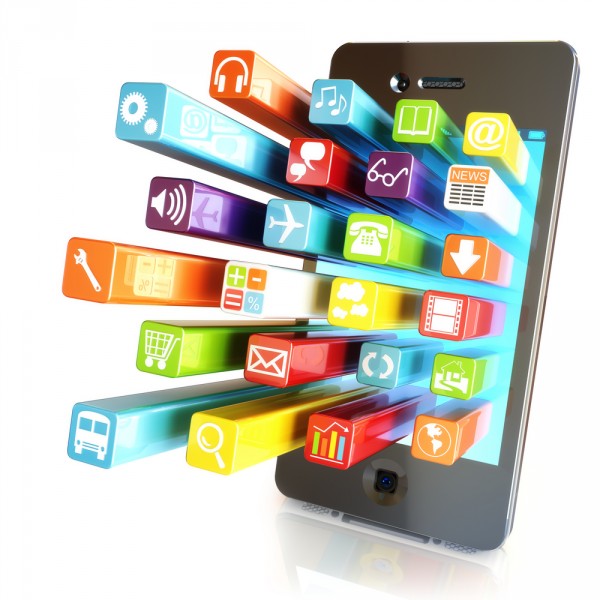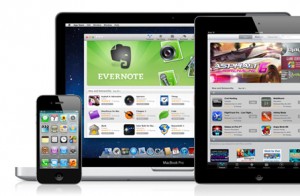Why design makes the difference between good and bad apps
 The first stage of developing an app involves no technical skills at all, it's also the hardest, and that’s coming up with an original idea. There are already thousands of apps out there so you need to make sure that what you’re proposing hasn't been done before. Or at the very least that you have a new and original twist on an idea that will make it stand out from the crowd.
The first stage of developing an app involves no technical skills at all, it's also the hardest, and that’s coming up with an original idea. There are already thousands of apps out there so you need to make sure that what you’re proposing hasn't been done before. Or at the very least that you have a new and original twist on an idea that will make it stand out from the crowd.
It's important to note that just creating an app isn't going to make you money, research by Canalys in 2012 showed that some two-thirds of apps received fewer than 1,000 downloads in their first year. The store pages have many thousands of "zombie apps" which still appear on the websites but never get downloaded.
Having a quality app that performs a useful function is therefore essential to success. If your app is good it's more likely to stick on people's devices. It's reckoned that on average people only keep 20 or so apps on their phones at any one time so if your app doesn't do something useful, or it doesn't work properly, it will quickly be uninstalled. Plus you’re likely to get negative comments on the app store and elsewhere which will damage your reputation when it comes to any future releases you might make.
There are so many apps that you may think all the best ideas have already been done. It's true that the world probably doesn't need another email app or Web browser. But if you can come up with something different -- a novel way of using a hardware feature like the camera or GPS for example, or a way of presenting information in a friendlier format -- then you can still find a market for new apps. A good example of this is the British Gas app for taking meter readings which uses the phone's built-in flash as a torch so that you can see the meter's digits clearly. For an app to succeed it really needs to solve a problem. Plus it’s best to focus on one thing and do it well rather than try to pack in too many functions and over complicate the software as a result.
If you're developing an app to complement an existing business, think about how it can improve the customer experience. We've already mentioned the meter reading app, another example might be an app for a lettings agency that uses the phone's geo location feature to show details of properties available in the area.
Once you've had the idea you need to familiarize yourself with the design principles of the OS you're going to use. Apple, Android and other operating system suppliers like you to conform to their vision for how apps should look and how easy they are to use. Your app is more likely to succeed if you follow these guidelines. It also pays to stick with the look of the operating system. Windows, Android and Apple all have different visual styles and you should try to echo these wherever possible. This is where apps that have been developed for one system often fall down when they're exported to others as they fail to adapt to the different appearance of the operating system. You don’t have to slavishly copy the look of the OS but you should at least try to make your app look at home on the device.
 Within the constraints imposed by the operating system you need to think about how design affects the way your app will work. Remember that in most cases you’re dealing with a small screen so it pays to keep things as simple and clean as possible. Packing in too many options will make the screen look cluttered and only serve to confuse the user. Try to decide which are the most important functions and make these the easiest to access. A good example here would be the pause button on a music player. Functions that are used less often -- like changing the app's settings -- still need to be accessible but don't have to be as prominent. Using keyboards on touchscreen phones can be fiddly so you should try to keep keyed input to a minimum.
Within the constraints imposed by the operating system you need to think about how design affects the way your app will work. Remember that in most cases you’re dealing with a small screen so it pays to keep things as simple and clean as possible. Packing in too many options will make the screen look cluttered and only serve to confuse the user. Try to decide which are the most important functions and make these the easiest to access. A good example here would be the pause button on a music player. Functions that are used less often -- like changing the app's settings -- still need to be accessible but don't have to be as prominent. Using keyboards on touchscreen phones can be fiddly so you should try to keep keyed input to a minimum.
You need to ensure that it's clear what all of the buttons and functions do. Many mobile users don't get the best from their devices because they're not sure how all of the functions work. Where possible use standard or easily understood symbols for functions. Examples would be an envelope for sending email, a handset for phone calls or a "hamburger button" (three short horizontal lines) for accessing program settings. If necessary you should think about including a help page in your app to explain what all of the functions are and how to access them. You can always link to a help page on the Internet rather than bulking out the app itself with this information.
When you’re planning how the app looks, designing buttons and logos and so on, do think carefully about colour and contrast. The screens on modern mobile devices are capable of very subtle color variations, but remember that your app will often be used in bright sunlight or other difficult conditions. Using a high-contrast color scheme will make the screen easier to read in all circumstances. For the same reason it's also good to define buttons with solid blocks of color rather than subtle shaded outlines.
Consider The User
The size of the buttons you need people to press is important too. It's unrealistic to expect people to tap accurately on a tiny area of the screen -- especially if they're using the app on the move. Take account of the fact that your app has to be usable by those with fat fingers as well as people with more delicate digits. The same applies to the fonts used on screen, don't be tempted to pack in more information by making the font so small that people will struggle to read it.
Many development tools take a template-based path to creating the interface of your app. This makes it easier to ensure that everything looks as it should and that all of the elements of the app are in the correct places. The downside is that template-based apps can tend to look similar and it can be hard to find a distinctive touch in order to make your offering stand out.
All of this may seem daunting. However, the key message is that design is important and it pays to take your time over it. The best apps are those where the developer has made an effort to understand both the style of the operating system and the needs of the users such that the finished result not only looks good but is also intuitive and easy to use.
This article is adapted from The Instant Guide to Creating an App available now from the Amazon Kindle Store priced $3.06.
Photo credit: Digital Storm/Shutterstock